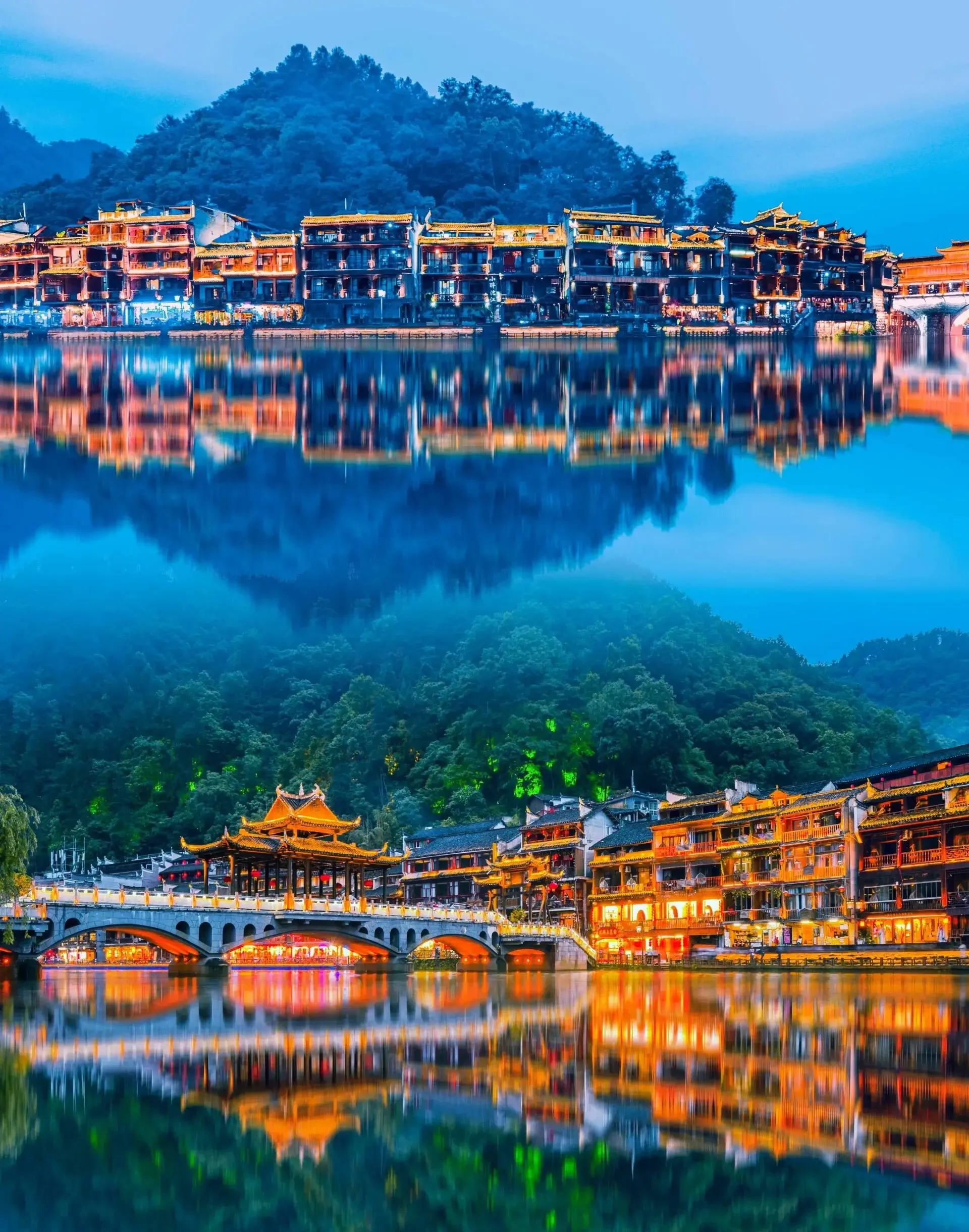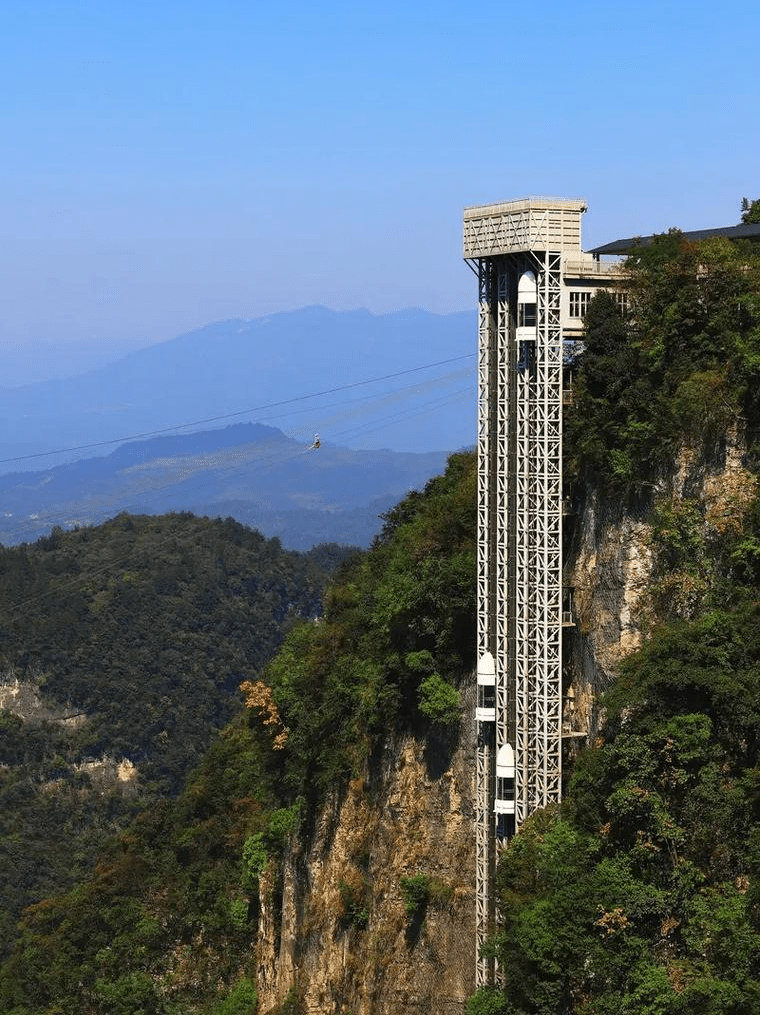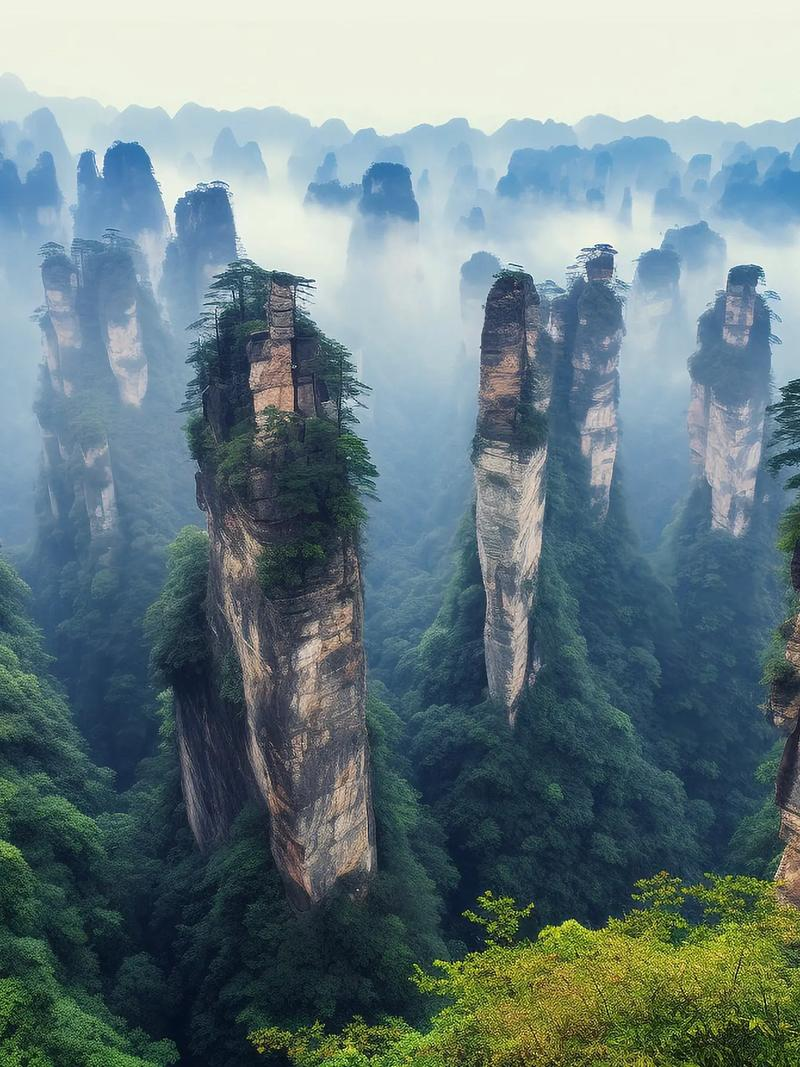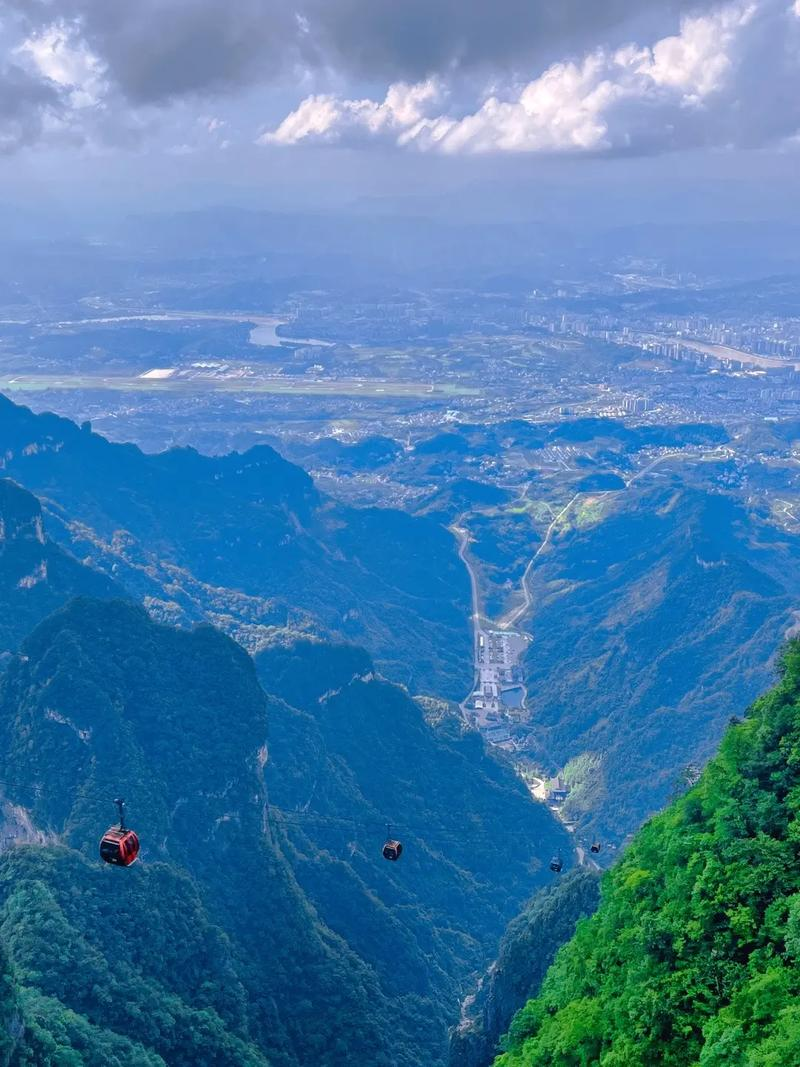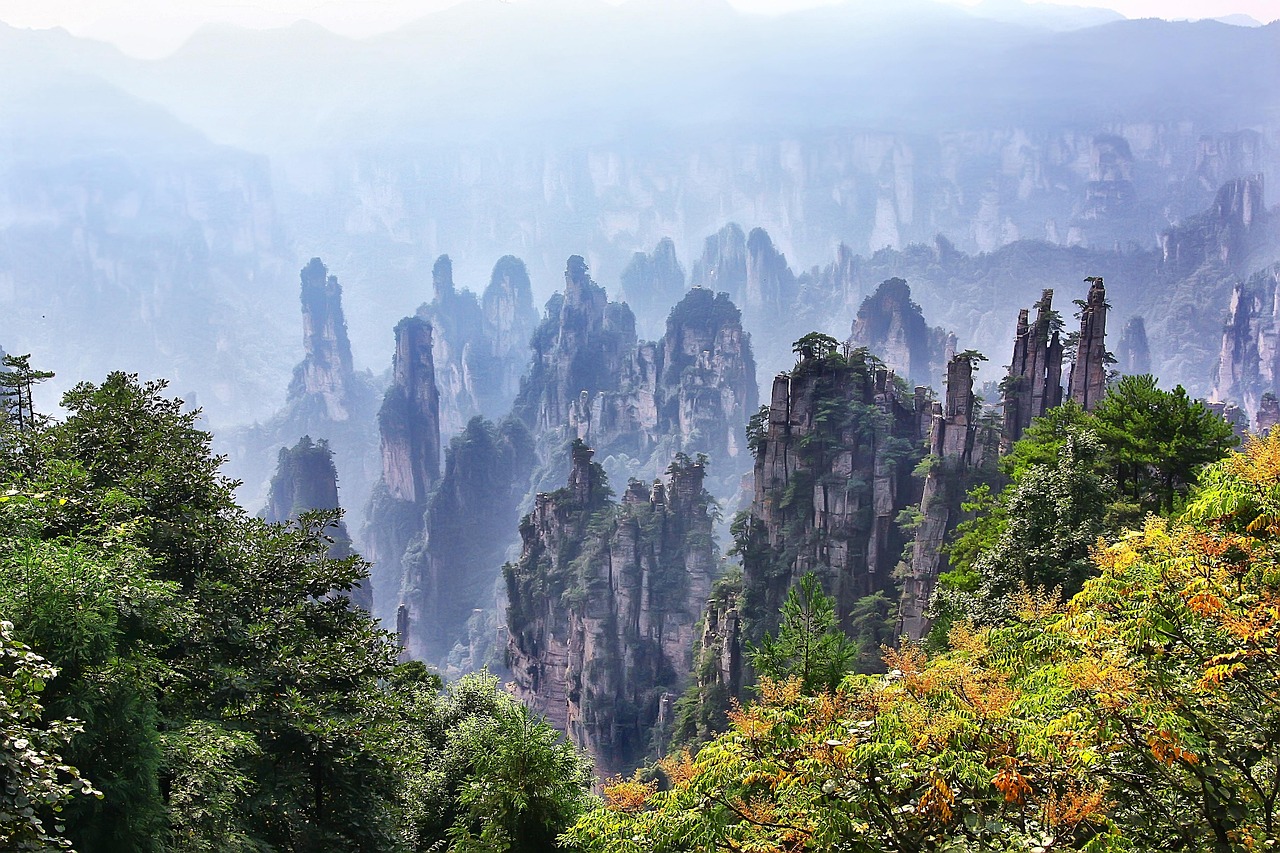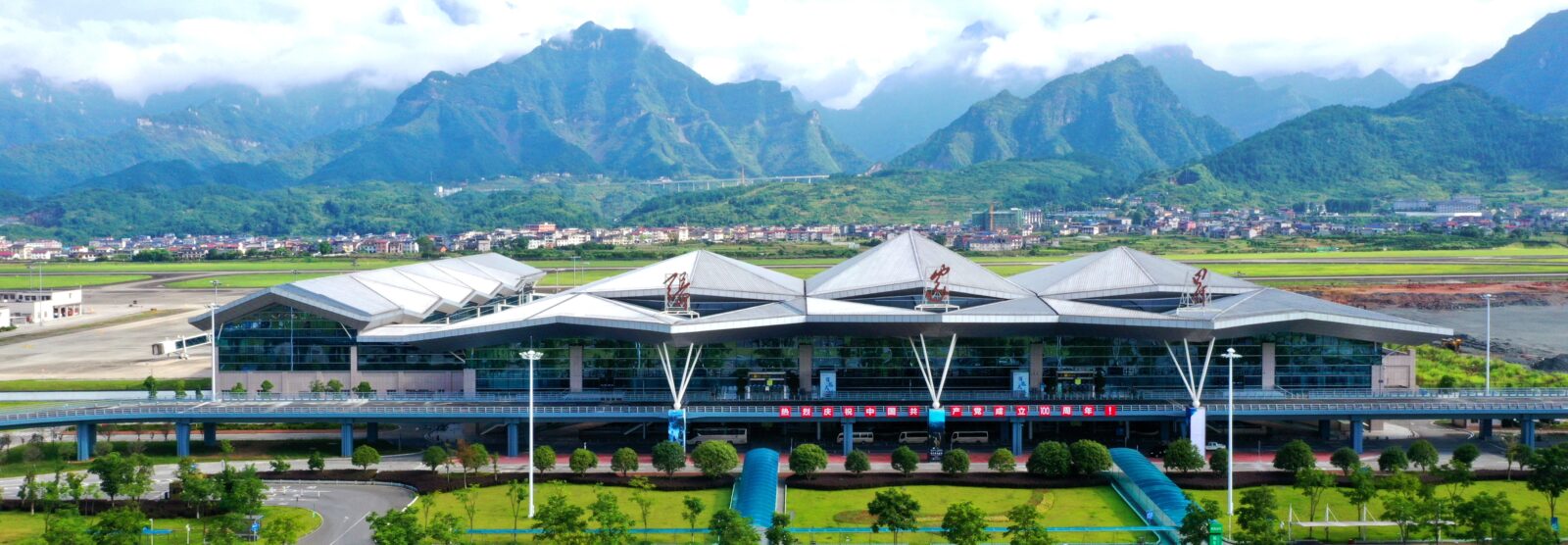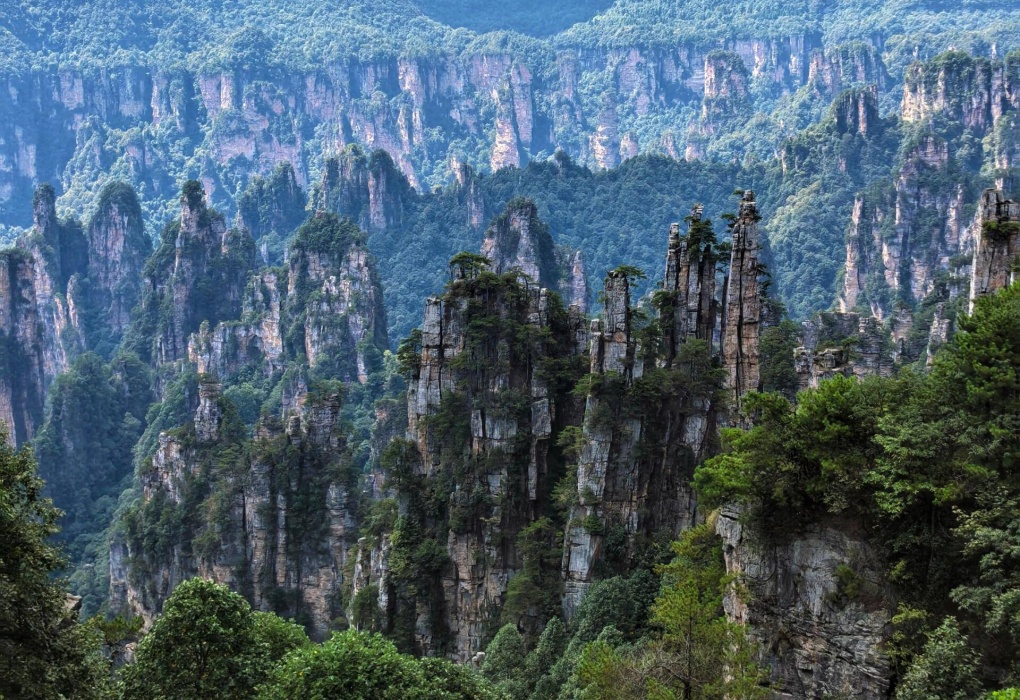Planning a Zhangjiajie itinerary isn’t something you do on autopilot. The national park is vast, spread over hundreds of square kilometers, with winding trails, endless staircases, and cable cars that stop running earlier than you expect. If you just show up, chances are you’ll miss the good bits or waste hours in the wrong line. And it’s not only about sightseeing—ticket rules, hotel locations, and even bus schedules can mess up a trip if you don’t know them beforehand. Looking for more ways to beat the heat? Don’t miss this handy guide on how to cool off in summer in China.
Why Plan Your Zhangjiajie Itinerary Carefully
Common Mistakes First-Time Travelers Make
Many first-timers assume they can “do it all” in one or two days. Truth is, Zhangjiajie National Forest Park is huge, and trails are not always straightforward. You might think you’re heading for the Avatar Hallelujah Mountain, but end up stuck at the wrong shuttle station. Another mistake is staying in downtown Zhangjiajie instead of Wulingyuan—this easily adds an extra 40 minutes of travel each morning. Also, people underestimate how tiring the stair climbs are; the stone steps feel endless, and it’s easy to burn out before noon. I once overheard a couple arguing at Yuanjiajie about missing the last bus, so yes, timing really matters.
Best Time for Zhangjiajie Itinerary: Weather, Crowds, and Costs
The park changes a lot with the seasons. April to early June has misty mornings and fewer crowds, while September to October brings sharp skies and bright autumn colors. Summer, though, gets insanely packed with school trips. Prices also shift—hotels in Wulingyuan that cost ¥250–300 per night in spring can go above ¥500 during Golden Week (source: Trip.com listings). Winter is cheaper, but cable cars sometimes close due to icy winds. Personally, the best compromise is late September. The air is crisp, and while it’s busy, it doesn’t feel suffocating like July.
Wondering more about seasons and weather? Check our guide on the best time to visit Zhangjiajie.
Zhangjiajie Itinerary Options by Days
2-Day Zhangjiajie Itinerary for Short Stays
Two days barely scratch the surface, but it’s doable if you focus. Day one should be Yuanjiajie and Tianzi Mountain—the areas with those pillar-like sandstone peaks. Take the Bailong Elevator up (a glass lift bolted to a cliff face, ticket around ¥72). Day two can cover Golden Whip Stream, which is calmer and flatter, good for a slower pace before heading back. The downside? You’ll skip Tianmen Mountain entirely. Still, if you’re pressed for time, this quick route feels intense but memorable.
If you’re chasing movie-like scenery, don’t miss our Avatar mountains Zhangjiajie checklist.
3 Day Zhangjiajie Itinerary: Classic Route with Avatar Mountains
Most travelers say three days is the sweet spot. One day in Yuanjiajie + Tianzi, one day in Yangjiajie or Huangshizhai, and one day at Tianmen Mountain near the city. This way, you hit the “Avatar” scenery, quieter zones, and also the glass skywalk over Tianmen. Be ready for crowds though—the Tianmen cableway line can stretch for an hour on weekends. Budget-wise, park entrance is ¥225 valid for 4 days, plus cable cars that average ¥70–90 each ride. A friend of mine once skipped the Tianmen glass bridge, saying it felt like a gimmick. But honestly, it’s more about the adrenaline than the view.
4 Day Zhangjiajie Itinerary: Adding Tianmen Mountain and Glass Bridge
With four days, you can slow down. Add Zhangjiajie Grand Canyon and its Glass Bridge (entrance ¥219). The bridge shakes underfoot—on purpose—which some find thrilling, others terrifying. This extra time also lets you wander Yangjiajie, a less commercial part of the park with dramatic cliffs and fewer vendors selling overpriced corn. You’ll come away feeling like you actually “lived” the place instead of rushing through.
Zhangjiajie Itinerary from Changsha or Other Cities
Zhangjiajie Itinerary from Changsha by Train or Flight
Changsha is the main gateway. High-speed trains from Changsha South take about 3.5–4 hours and cost around ¥200 second class. Flights are faster—just 1 hour—but delays are common. I once landed in Zhangjiajie Hehua Airport past midnight, and the taxi drivers waiting outside charged flat ¥100–120 to Wulingyuan. Not a scam, just the going rate after dark. If you’re on a tight schedule, morning trains are the safest bet.
Flying in directly? Here’s a quick Zhangjiajie airport guide for foreigners.
From Beijing, Shanghai, or Guangzhou: How Long Is Enough?
Beijing and Shanghai are far—flights take 2.5 hours, trains 10–12. For travelers starting there, three full days in Zhangjiajie is the minimum to make the trip worth it. From Guangzhou, the train is only 6–7 hours, so weekend trips are more realistic. Either way, if your schedule is rigid, don’t plan for less than two nights, or you’ll spend more time traveling than seeing the mountains.
Practical Travel Flow: Tickets, Transfers, and Hotels
How to Buy Entrance Tickets (With Foreign Cards or Apps)
Foreigners can book on Trip.com or directly at park gates with passport. Alipay and WeChat Pay sometimes reject foreign cards, though I managed to link my UK Visa once—it worked but failed for a friend’s Mastercard. Safer route: Trip.com, where you can pay in USD. Note the entrance ticket is valid for 4 consecutive days, which is rare in China. Don’t throw it away after day one.
Staying Overnight in Wulingyuan vs. Downtown Zhangjiajie
Wulingyuan is inside the scenic area and saves huge amounts of time. Hotels range from ¥180 hostels to ¥600 mid-range stays. Most accept foreigners, but double-check when booking—look for “接待外宾” on Chinese listings. Downtown Zhangjiajie has more nightlife, but you’ll waste at least an hour daily commuting. If your trip is short, Wulingyuan wins every time.
Local Transport Tips: Shuttle Buses, Cable Cars, and Walking
Inside the park, shuttle buses are free with your ticket, but schedules are unpredictable. Sometimes buses leave half empty, sometimes you’ll wait 25 minutes. Cable cars save energy but queues eat time. Walking trails connect most spots, though signage in Pinyin is occasionally wrong—“Hallelujah Mountain” once appeared as “Halleluja Montain” on a sign near Yuanjiajie. A small thing, but confusing when you’re already tired.
Zhangjiajie Itinerary for Different Travelers
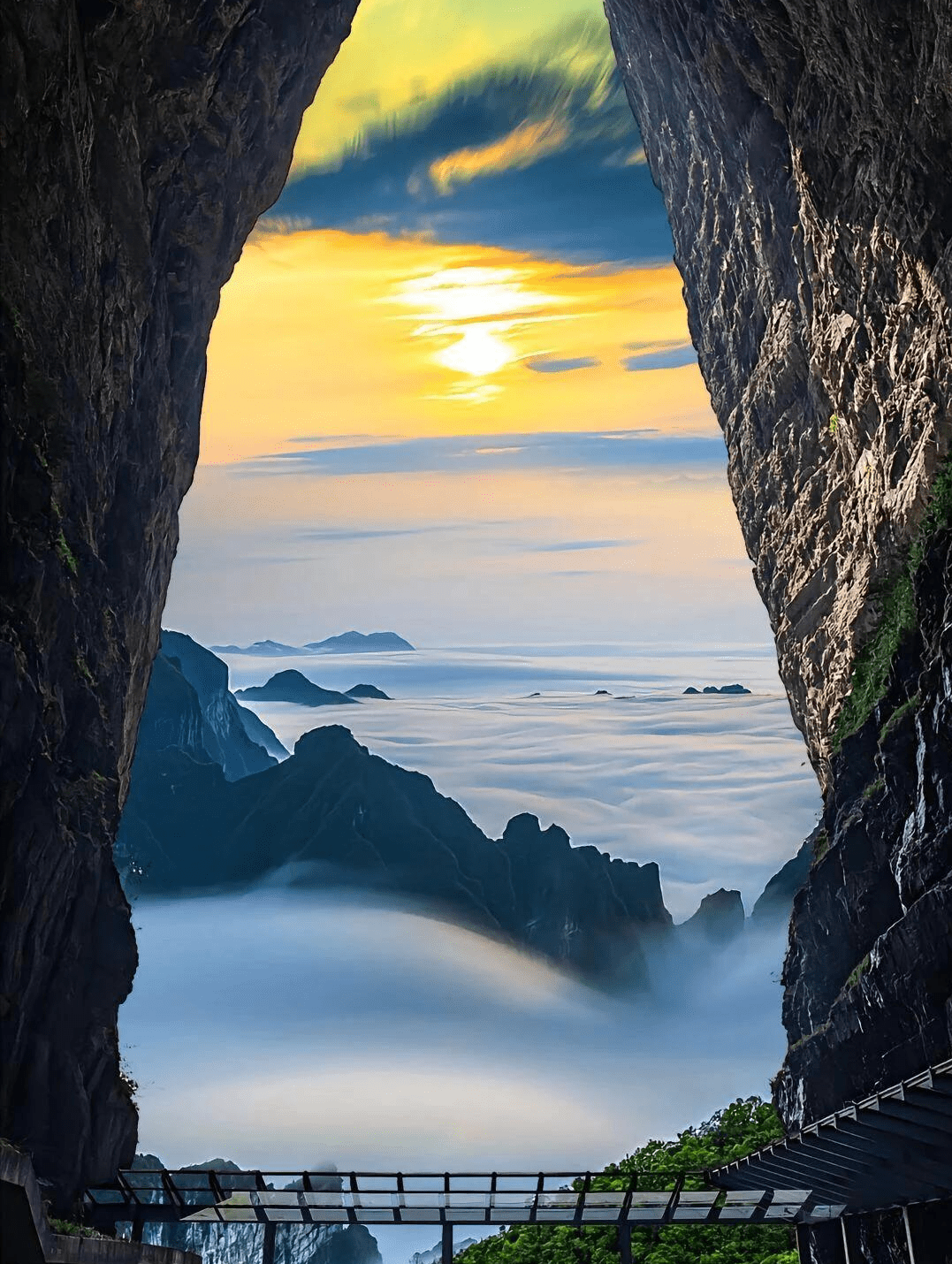
Zhangjiajie Sea of Clouds
Families with Kids: Easy Trails and Safety Notes
Families should stick to Golden Whip Stream, where paths are flat and shaded. Avoid the endless stairways up Tianzi unless kids are older. There are monkeys along the stream—cute, but keep snacks hidden or they’ll snatch them. Some parents said in reviews that strollers aren’t practical; steps are everywhere. Bring a child carrier instead.
Backpackers on Budget: Hostels, Street Food, and Shortcuts
For backpackers, Wulingyuan has hostels under ¥100 a night. Street food—spicy tofu skewers, rice noodles—cost around ¥15–20. A budget hack is skipping cable cars and just hiking, though this takes serious stamina. Some trails are nearly deserted, and you’ll run into locals collecting firewood. It feels authentic but exhausting.
Photographers and Hikers: Sunrise Spots and Off-Route Trails
Photographers rave about Laowuchang, a viewpoint outside regular shuttle routes. You’ll need a private car or a long hike. Sunrises there make the peaks look like floating islands. Serious hikers also head to Tianbo Mansion in Yangjiajie, where cliffs are wild and crowds thin. Just note the trail is narrow and railings feel shaky in parts. Not for the faint-hearted.
Extra Tips to Make Your Zhangjiajie Itinerary Work
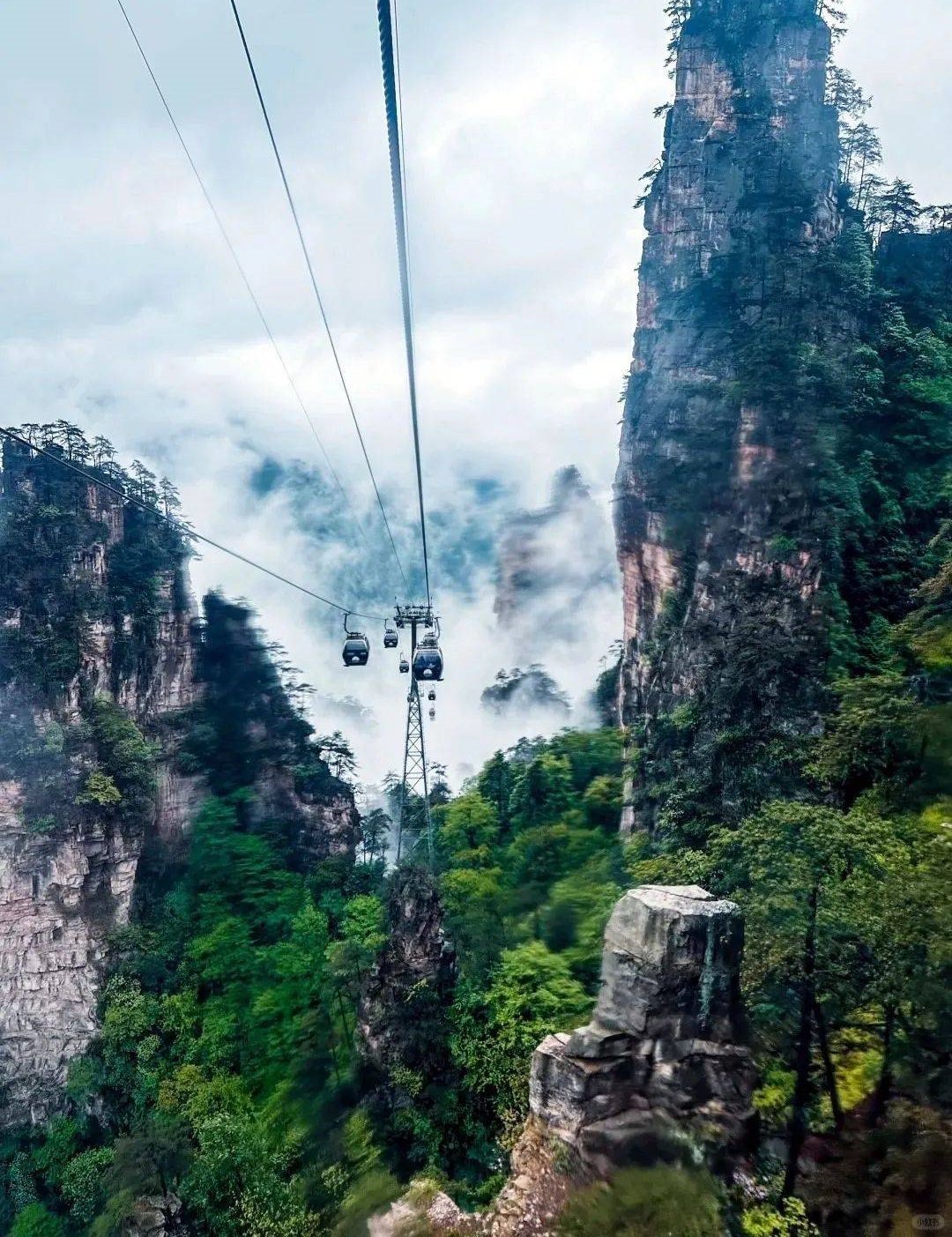
Zhangjiajie Cableway
Avoiding Tourist Traps and Fake “Avatar” Spots
Locals sometimes advertise small karst areas as “real Avatar mountain,” usually on the roadside. Skip those. The only official site is in Yuanjiajie. Also beware of vendors charging ¥30 for corn that costs ¥10 outside.
Language Barriers, Pinyin Signs, and Useful Apps
English isn’t widely spoken, even at ticket counters. Translation apps help, but the signal inside valleys can drop. Download offline packs for Baidu Maps or Google Translate. One Canadian traveler on TripAdvisor wrote they got lost for two hours because “Exit” was mistranslated as “Export” on a sign. It sounds funny, but when daylight fades, not so much.
What Locals Recommend vs. What’s Online
Online guides push Bailong Elevator and Tianmen glass skywalk. Locals, however, often recommend quieter Huangshizhai. A taxi driver told me “那边空气好,人少” (“the air is better, fewer people”). And honestly, he was right.
FAQ on Zhangjiajie Itinerary
Q: How many days do I need for a Zhangjiajie itinerary?
A: Three days is usually the sweet spot. With that, you can cover Zhangjiajie National Forest Park, Yuanjiajie’s Avatar mountains, and Tianzi Mountain without rushing. If you add one more day, you can include side trips like the Glass Bridge at Zhangjiajie Grand Canyon or even a relaxed half-day in Wulingyuan town. Anything shorter tends to feel like you’re just checking boxes, but three days gives you time to actually enjoy the views.
Q: Can I buy tickets online with a foreign card?
A: Yes, but not always directly. Platforms like Trip.com accept international Visa and MasterCard, which is the easiest route. If you try to use Alipay or WeChat Pay with a foreign card, it sometimes works but often fails because of bank restrictions. For peace of mind, most foreign travelers stick to Trip.com—it has an English interface and confirms tickets instantly.
Q: Is the Bailong Elevator worth it?
A: Many say yes, especially if you’re short on time. This glass elevator shoots you up 326 meters in under two minutes, saving hours of steep stair climbing. The view itself is a thrill—you’re literally rising through cliffs. On the other hand, the price (72 RMB) feels steep for some, and the line can get long in peak season. If you love engineering marvels, you’ll enjoy it. If you’re on a tight budget, you might prefer to hike.
Q: When is the best time to visit Zhangjiajie?
A: Late September to October is hard to beat. The weather is cooler, skies are clearer, and fall colors make the cliffs even more dramatic. April is also a favorite—less crowded, mist curling around the peaks, and the whole park feels like a Chinese painting. Summer is lush but hot and packed with tour groups. Winter has fewer crowds, but some areas may close due to snow.
Q: Can I do a Zhangjiajie itinerary in 2 days?
A: It’s possible, but you’ll be racing. In two days you can hit the highlights—Avatar Hallelujah Mountain, Tianzi Mountain, and Golden Whip Stream—but you’ll have to skip something big like Tianmen Mountain. You’ll spend a lot of time moving between scenic buses, and you won’t have the luxury to just sit and soak in the views. Most people who try say they leave wanting more.
Q: Are hotels in Wulingyuan foreigner-friendly?
A: Most mid-range and higher-end hotels are licensed to accept foreign guests, and staff usually speak at least basic English. The challenge comes with budget guesthouses: some are not authorized for foreigners under China’s accommodation law. To avoid check-in issues, it’s safer to book through Trip.com or Booking.com, which filter out unlicensed stays. Wulingyuan itself has a good mix, so you’ll find something comfortable.
Q: How much does a full trip usually cost?
A: Budget travelers typically spend around ¥1,200–1,500 for three days, not counting flights. That covers entrance tickets (225 RMB for the park, valid four days), shuttle buses, basic hotels, and meals in Wulingyuan. If you add extras like the Glass Bridge (141 RMB) or Bailong Elevator, the cost goes up. Mid-range travelers might spend closer to ¥2,500 with nicer hotels and more activities.
Q: Are there luggage storage options inside the park?
A: Yes, at the main entrance you’ll find lockers and manned storage counters. Hours are usually from 8:00am to 6:00pm, so don’t expect overnight storage. Prices are modest, around 20–30 RMB per bag. If you’re traveling with big suitcases, many hotels in Wulingyuan also hold luggage for free if you’re staying with them.
Q: Is the Glass Bridge scary?
A: It depends on your nerves. The Zhangjiajie Glass Bridge stretches 430 meters across a canyon, with a see-through bottom. It even “shakes” a little when you walk—it’s designed that way for effect. For many visitors, it’s a once-in-a-lifetime thrill. But if you have a fear of heights, the transparent panels and the sheer drop below might be too much. Some people freeze halfway, so know your limits.
Q: What apps should I download before going?
A: Trip.com is a must for booking tickets and hotels with a foreign card. Baidu Maps is more accurate than Google Maps in China, and you can pre-download offline maps. For language, Google Translate works well if you download the Chinese pack, and it can scan menus with your camera. Some travelers also keep Alipay or WeChat just in case, though setup for foreigners can be tricky.
